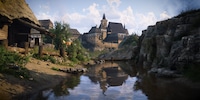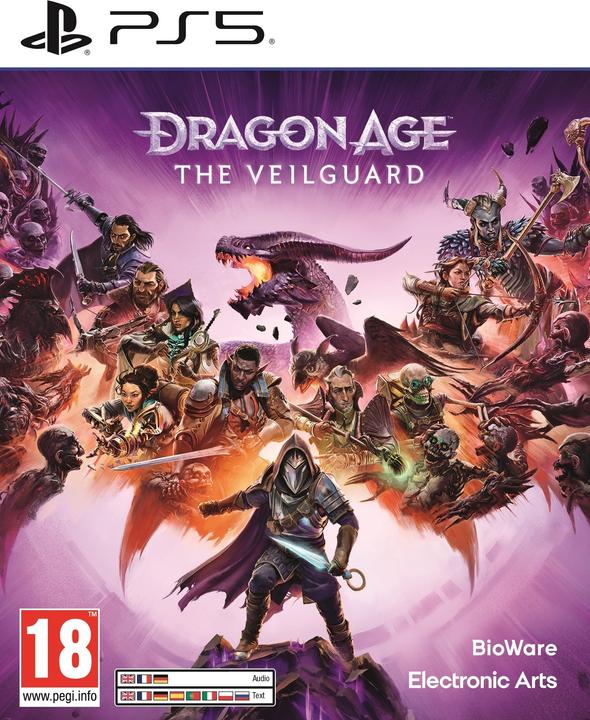

"Dragon Age: The Veilguard" tested: for those who find "Baldur's Gate 3" too complicated
With "Dragon Age: The Veilguard", Bioware delivers a gripping action role-playing game that is aimed at the masses but doesn't forget its roots.
"Baldur's Gate 3" is a huge success, although it does not fit the classic image of a mainstream product. It is inaccessible, complicated and extremely long. However, the sales figures speak for themselves: the surprise hit has sold over 20 million copies. All future representatives of the genre will have to measure themselves against it - including "Dragon Age: The Veilguard" by Bioware. The Canadian studio provided the template for Larian's blockbuster with "Baldur's Gate" 1 and 2. It's a topsy-turvy world in which Bioware wants to redeem itself from past failures with the fourth "Dragon Age".
After the two flops "Anthem" and "Mass Effect Andromeda", the studio has a lot to make up for. Dragon Age: The Veilguard has a surprising amount in common with the latter, or rather the trilogy centred around Commander Shepard. And in a positive sense.
The main story is a means to an end
As a Dragon Age fan from the very beginning, I would describe the games as an equilateral triangle consisting of story, companions and combat. "Dragon Age: The Veilguard" is more of an isosceles triangle, with the short side being the main story. Although it also forms the centre of the game here, it develops little depth. It begins with Solas, the dire wolf. This is why the game was originally called "Dreadwolf". The elven companion from "Dragon Age Inquisition" wants to use a magical dagger to tear the "veil" that separates the realm of Thedas from the world of demons. Veil means "veil" in English, hence the final title "Veilguard".
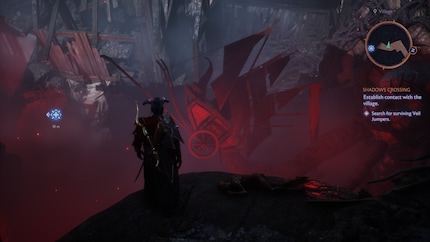
Source: Philipp Rüegg
The ritual fails and two powerful elf gods are released. They must be tamed in the course of the game. The demonic Darkspawns and the mysterious plague "Blight" also threaten the world again. There is no shortage of epic scenes or boss battles against three-headed dragons, but the main story offers little of note in terms of content.
This is also due to the dialogue. They are not eloquent enough and often lack substance. They are also rather short, which on the one hand makes me happy because I don't have to have my ear chewed off. Yet "Dragon Age" is said to have more text than "Baldur's Gate 3". Nevertheless, they don't stand up to comparison with its dialogue.
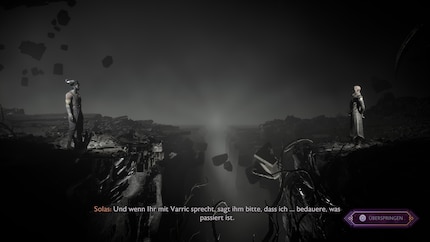
Source: Philipp Rüegg
I often miss the right text on the reply wheel, especially for my own character. This menu was introduced in "Mass Effect". There was a morality system from "Paragon" and "Renegade", which was one-dimensional, but still gave the illusion of some individuality. My character delivers any answers in an unexcited, friendly neutrality. I can't form a personal character with it. I am a generic "people pleaser". I can't even give myself a hint of personality with my name. I baptised my heard Qunari "Horny", but the name never appears in the game.
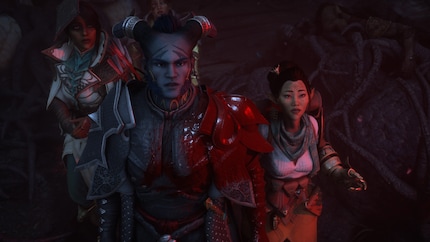
Source: Philipp Rüegg
Instead, my name is Rook. It's a freely configurable hero character who, in classic Bioware style, gathers a team around him to save the world. I can choose between the four classes, Elf, Qunari, Human and Dwarf. There are also six factions. Both influence Rook's story and dialogue options. However, this is not strongly expressed in "Veilguard".
More important is the class. There are three of them: warrior, mage and rogue. That doesn't look like much. However, the extensive skill tree gives me three specialisations to choose from. I opted for the rogue, who specialises in melee and ranged combat.
This is where the intro begins, at the end of which I find myself in my new base, the lighthouse. It is a small floating island world that gradually fills up with my companions. An old acquaintance is the dwarf Varric, who has been with me since part 2. He is also the one who summarises the current events in beautifully drawn cutscenes.
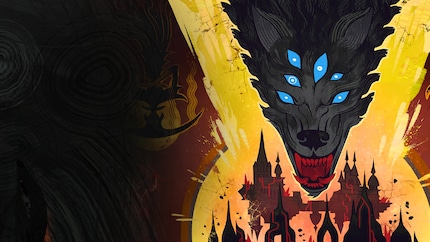
Source: Bioware
From the lighthouse, I travel to the different regions of Thedas' via "Crossroads". The Crossroads is a magical realm consisting of gigantic mirrors through which I can navigate to my destinations. Of course, a mysterious ferryman who steers a floating boat is not to be missed.
Little tactics, but agile and powerful
As soon as the game lets me off the leash, I throw myself into the adventure, which involves a lot of fighting. Here, too, the game reminds me of "Mass Effect". Just like in the sci-fi epic, I can take a maximum of two companions with me. I only control them indirectly. I can pause the action at any time and give them a handful of commands. I usually limit myself to aiming at a target and selecting a special attack. I can use these to trigger powerful combo attacks.
I don't have to think about which attacks go together. Attacks that are ready for a combo light up - including the description "Combo option". If I select one, the matching attack immediately lights up under the words "Combo with". "Veilguard" does not come close to the tactical depth of the first "Dragon Age", but it is also immediately understandable for newcomers.
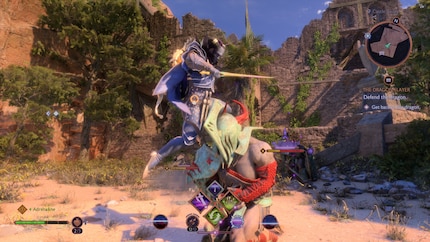
Source: Philipp Rüegg
Due to the different synergies, some companions fit better with others. However, I can influence their alignment to a certain extent via their skill trees. Just like me, they can only equip three skills. I also have an ultimate attack.
The battles are undoubtedly one of the highlights of "Veilguard". They are powerful, fast and more direct than ever before in the series. As a rogue, I dash and jump back and forth across the battlefield. If I block at the perfect moment, I can counter-attack. I dodge unblockable attacks. If the timing is right, time slows down briefly. Battles are never too difficult or too easy. I don't need to worry about my companions, they obviously can't be wounded. Accessibility is also the main focus here.
Since enemies protect themselves with magic barriers or armour, I have to weaken them with the right attacks. Arrow attacks help against barriers and strong punches against armour, for which I have to press the attack button for longer. I played with the controller, which is probably the preferred control method. I also have abilities such as a poisonous rain of arrows or a lightning throw. Everything together makes the battles an explosive action ballet, the likes of which I have rarely experienced in a role-playing game.
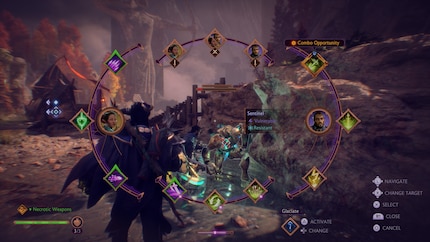
Source: Philipp Rüegg
It's a shame that my companions can only use one ability at a time. After that, I have to wait for the cooldown. So I practically only ever use the abilities that trigger a combo. There would be numerous exciting abilities, such as slowing down time, ice storm or deflecting attacks from me.
My last tool is Solas' dagger, which I "inherited" at the start of the game. I can equip it with three runes that give me different boosts. As with the abilities, only one rune can be activated at a time. This allows me to make myself invulnerable for a short time, deal fire damage or reset the cooldowns of my skills. Extremely practical, but it is often difficult to choose the right rune in the heat of battle.
The companions are the heart
The mainstay of every "Dragon Age" is the companions. A little patience is required here. Only after about 15 hours do they start to develop their personality and grow on me. Before that, they have a lot of meaningless conversations. Or potentially funny moments are squandered. I stumble into the room of the lovable but somewhat confused veil-jumper Bellara, only to surprise her in conversation with a necromancer and a masked ghost. After just two sentences, I'm back outside the door without having learnt anything or said anything stupid.
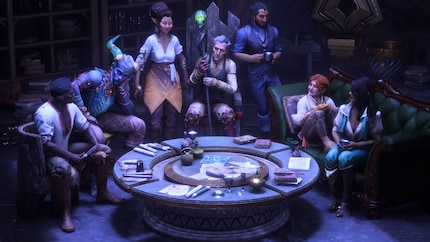
Source: Bioware
Even hitman Lucanis Dellamorte is initially an empty shell. If I had to describe him, I'd say he speaks with a Spanish dialect and has a demon inside him. A Magic the Gathering card has more depth. Not for the first time, I wonder whether Bioware has honed the edges too tightly. The game lacks bite. My companions are a bunch of fabric softeners.
With the exception of the mage Neve Gallus, who is simply too monotone in English, everyone gradually develops exciting facets. There is the Grey Warden Davrin, who hires himself out as a monster hunter together with his adopted griffin. The well-being of the magical flying creatures is particularly close to his heart and he searches for his own destiny.
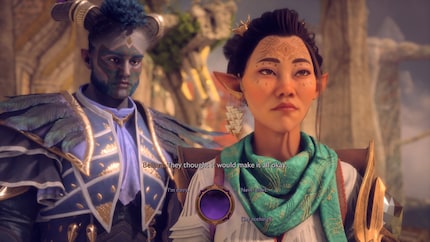
Source: Philipp Rüegg
Emmrich, a nice necromancer who usually teaches students and takes a childlike skeleton named Manfred along on his missions as a helper, is my hero. And Taash, the fire-breathing Qunari dragon hunter, who is at loggerheads with her strict mother and has to fight the biggest demons on the inside, you simply have to like her - or start a romance with her. Of course, this is also available again in "Dragon Age: The Veilguard". Unfortunately, only with one person at a time, which will bitterly disappoint all polyamorists.
Bellara also makes up for her initial reticence, with conversations like:
- Lucanis: "Aren't you afraid of a hitman like me?"
- Bellara: "Not really. Nobody would pay anything to kill me."
- Lucanis: "That's right."
Cynical, but funny. It's always exciting to find out what kind of conversations arise between the different duos. Until these character developments have unfolded, the game motivates me primarily through the motivating combat system and the perfectly measured amount of treasures and puzzles.
A lot to do
The quest log in "Dragon Age: The Veilguard" fills up faster than Varric's tankard in the local pub. Despite the impending end of the world at the hands of vengeful gods, I can pursue countless side quests instead of the main story. My companions' quests are at least somewhat intertwined with the main storyline, so it makes perfect sense to be distracted by them. As in most Bioware games, they are among the highlights.
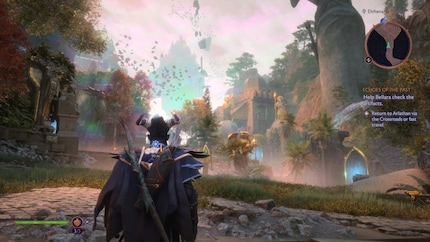
Source: Philipp Rüegg
With the seven companions, I can embark on multi-part quest series. In contrast to the main story, they are almost always exciting and motivate me to play through them all. As a bonus, I receive unique items of equipment. At the same time, it strengthens my bond, both in the game and with myself as a player. When I can accompany Taash on an adventurous dragon hunt or free kidnapped birds of prey with Davrin, their fate touches me because I get to know their characters better.
In addition to the main and companion quests, there are lots of regional quests. Sometimes I have to track down missing scouts, sometimes defeat demons and repeatedly clear the world of Blight infestations. During active quests, a path marker always shows me where I have to go. Like much of the interface, I could switch it off, but I welcome this kind of accessibility. It suits the bite-sized activities that the game provides me with.
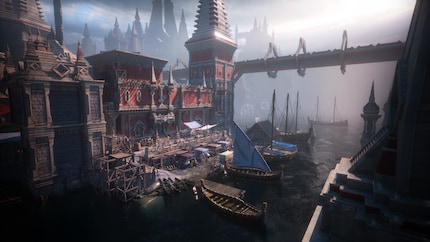
Source: Philipp Rüegg
The regions are less extensive than in "Inquisition", but extremely densely filled with activities, loot, puzzles and enemies waiting to be beaten up.
I regularly find shiny golden treasure chests. Often clearly visible at the side of the path. There are also wolf statues that point in a certain direction when activated, where I find a mini statue that gives me skill points. Another statue projects floating targets in the immediate vicinity. Once I have shot them all down, my health points increase permanently. For many treasures, doors or platforms, I have to solve small puzzles. Although in the first 15 hours or so, they hardly deserve this description.
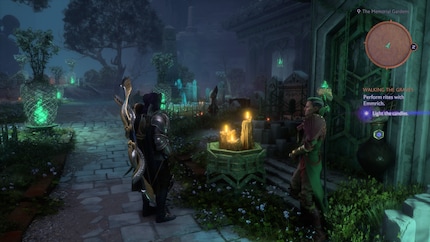
Source: Philipp Rüegg
They usually consist of moving energy crystals or spirit spheres from A to B to open a door or make a magical bridge appear. B is often only a few metres away from A. I keep asking myself whether the whole thing is really necessary. As if that wasn't easy enough, my companions usually tell me the solution straight away. It's obvious that Bioware is trying to pick up newcomers.
Each companion has a unique ability. The dwarven scout Borte Harding can move certain rocks, Davrin's griffin can undo fortifications and Emmrich can speak with spirits. As soon as these abilities are introduced, I can use them myself with Sola's magic dagger. I prefer that to always having to swap in the right companion first. However, there are no real puzzles even with the companion abilities. They at least liven up the action.
In the beginning, the lack of challenge bothered me. Now I love the fact that I rarely have to spend more than a few minutes on a puzzle. It's little morsels that activate my reward centre on the way to the next quest.
Loot consists either of weapons, armour, rings or resources to improve your equipment. If I find a new sword, it is displayed directly and compared with the one I have equipped. I can equip it with one click. It couldn't be more convenient. If I find the same item several times, the rarity level improves. So grey becomes green, green becomes blue and so on. This makes me twice as happy when I'm looting.
In the keeper's workshop in the lighthouse, I can improve my equipment in exchange for resources. I can also add enchantments to them. It doesn't even cost anything. However, each enchantment can only be used on one item. For higher upgrade levels and enchantments, I have to improve the workshop. To do this, I need mementos, which are scattered all over the world.
Lots for the eyes and ears
Visually, "Dragon Age: The Veilguard" is a stunner. It is full of expressive and iconic designs. Bellara and Taash are particularly successful. But the many supporting characters are also wonderfully eccentric. The monster design is also a feast for the eyes. The zombie-like darkspawn with their fiery red eyes come in all shapes and sizes. The giant dragons are particularly epic and always give you goosebumps.
The world is even more impressive. Rivain Coast offers picturesque coastlines with turquoise-blue water and stranded ships. In the catacombs of Necropolis, I marvel at gigantic statues that shimmer eerily in green light. And the fleshy, pulsating blight overgrowth in the swampland is wonderfully disgusting.
There's an orchestral soundtrack that sometimes delivers surprisingly fitting electro beats that remind me so much of "Mass Effect" that it's no coincidence.
Technically, there's nothing to criticise. I tested the PC version, which ran flawlessly on two systems. The hardware hunger also seems to be within limits.
"Dragon Age: The Veilguard" is available for PC, PS5, Xbox Series X/S and was provided to me by EA.
In a nutshell
Bioware achieves the turnaround
After 35 hours, I can say without a doubt: "Dragon Age Veilguard" is a really fun role-playing game. At first I thought Bioware had sanded off too many edges. The game is trimmed for maximum accessibility. Especially at the beginning, the game takes me more firmly by the hand than parents take their children at the pedestrian crossing. The dialogue is shallow, every puzzle is explained with text, audio and images and the game is linear.
What's really fun from the very first minutes is the combat. It is powerful, direct and visually spectacular thanks to unusual attacks and spells. This also applies to the presentation. The regions in "Dragon Age Veilguard" are a feast for the eyes.
The initial superficiality gradually gives way to a multi-layered and gripping role-playing game. Although it doesn't reach the complexity of "Baldur's Gate 3" in terms of content or gameplay, it offers a better flow of gameplay - despite a packed quest log.
This is largely due to my companions. Their fates touched me the most. At the epic conclusion, "Dragon Age Veilguard" is once again reminiscent of "Mass Effect". The fate of the world and my companions is on a knife's edge and storylines flow together. That's exactly how it has to be. And don't worry: the game doesn't end like "Mass Effect 3" with doors one, two or three.
If "Baldur's Gate 3" puts you off with its mass and complexity and you are looking for a more accessible role-playing game with more action, then Bioware's latest work should appeal to you.
Pro
- Great companions with individual quest series
- Powerful and active combat system
- beautiful world
- accessible for newcomers
- Motivating side quests
Contra
- The main story is simple
- Dialogues sometimes a bit shallow
- Companions only have a subordinate role in combat

As a child, I wasn't allowed to have any consoles. It was only with the arrival of the family's 486 PC that the magical world of gaming opened up to me. Today, I'm overcompensating accordingly. Only a lack of time and money prevents me from trying out every game there is and decorating my shelf with rare retro consoles.
Which films, shows, books, games or board games are genuinely great? Recommendations from our personal experience.
Show all